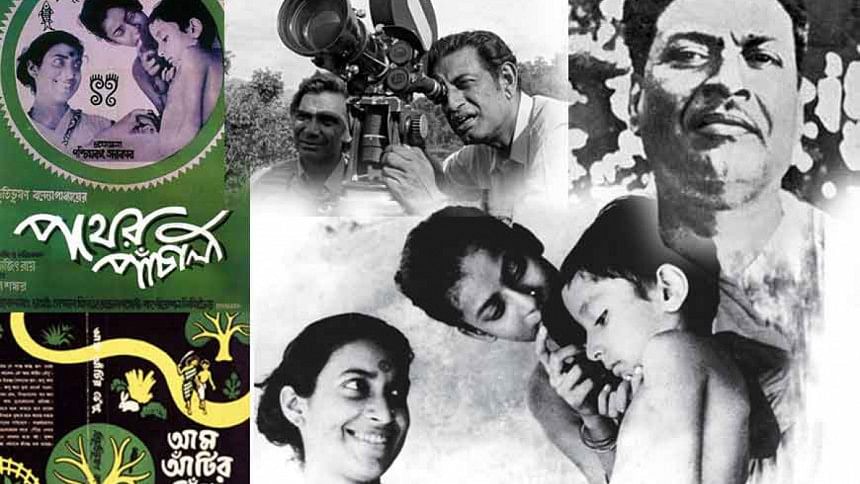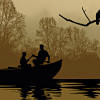Bibhutibhushan Bandopadhyay: Ray’s greatest creative inspiration

Bibhutibhushan Bandyopadhyay, the prodigal son of Bengal, remains an icon of breathtaking narrative style with a distinguished body of work. Today, on his 129th birth anniversary, this article revisits the instance when the author met the brilliant Satyajit Ray for the collaboration that weaved and shaped itself in the history of Bengal's art and literature.
Let us first go back in time and look at the story of how the two aforementioned brightest stars of 19th century Bengali art and literature, met. Then we can ponder over the glorious history that took Bengali cinema to the world's stage.
In the late 1940s, Satyajit Ray, a magnificent artist, visualizer, and illustrator, who was yet to make history, was working at an advertising firm named D J Keymer and Co in Kolkata. Bibhutibhushan Bandyopadhyay, a moderately recognized novelist at that time, had taken up a part-time job as an editor at Signet Press, a publishing house.
At a magical instance that would later change the history of Bengali cinema forever, it was Ray that the publishers had commissioned to illustrate a short (children's) version of the novel "Pather Panchali", called "Aam, Antir, Bhepu" (Mango, Seed, and Horn).
As Ray started working on the project, Bandyopadhyay ran into him and asked whether he had read the novel. Ray said that he had not read the novel yet. To that Bandyopadhyay remarked, "It is a blasphemy that you have not read it."

Upon his embarrassment and unintended indifference, Ray then read the novel thoroughly and illustrated the cover for the Signet Press edition.
Ray was nonetheless immensely moved by the novel, as he could relate to the character of Apu. He could also relate to the village of Nischindipur, mentioned in the novel, as he had seen a similar hamlet during his time as a student at Santiniketan.
Bandyopadhyay subsequently became Ray's greatest creative inspiration. Once the prodigal son of Bengal, passed away in 1950, Ray's mission had just begun.
Later, as Ray adapted three of the author's novels for the screen, he fervently referred to him as his favourite author and said, "His lines fit the characters so well, they are so revealing that the author does not need to provide a specific physical description. Every character seems to present itself before us simply through the words it speaks."
Bibhutibhushan had a spectacular narrative style, he was adept in touching upon intricate details of every corner of rural Bengal along with the minute emotions that humans suffer from – be it in death, separation, desolation or birth. Ray, could also easily portray similar atmosphere, emotions, and narrative with his artistry – from the subtle difference between dawn and dusk to the stillness that precedes the first monsoon shower.
Ray made three movies based on the Apu Trilogy, namely, "Pather Panchali" in 1955, "Aparajito" in 1956, and "Apur Sansar" in 1959.
All three of these masterpieces of Bandyopadhyay closely interlace the simplicity, aspirations, and despair of the common man through its protagonist, Apu. The shattered threads of a better future, dreams, and aspirations take everything from the protagonist throughout his journey, to give back in an almost tragic and satirical cohesion.
To tell a tale, Ray wondered why he chose "Pather Panchali" to be his debut movie and what motivated him to work on that very novel. He said, "I chose 'Pather Panchali' for the qualities that made it a great book - its humanism, its lyricism, and its truth."
In his remark, about "Pather Panchali", filmmaker Akira Kurosawa, once said in 1987, "I can never forget the excitement in my mind after seeing 'Pather Panchali'. It is the kind of cinema that flows with the serenity and nobility of a big river."
At a time when Bengal's brightest star, Rabindranath Tagore, was single-handedly dominating the literary scene of Bengal, it was tough for an intricate and intimate writer like Bibhutibhushan Bandopadhyay to survive and get recognized.

Almost all the writers that persisted and followed after the golden era of Rabindranath were greatly influenced by him and thus produced a body of work that could not be looked at distinctively.
However, Bandyopadhyay was different. With his cunningly 'political' novels, short stories and articles, he crafted his distinctive style and narrative. He cultivated his literary voice by mixing his inner rural self and poetic sensibilities to establish his individuality as a great writer, thus creating a cult-like following later.
Unlike Tagore, his novels did not necessarily dwell on psychological depth. Historically, Bandyopadhyay was a politically aware modernist writer and he remained fairly traditional in his execution of language and plot. His craftily and innately political way of preserving the Bengali rural sceneries, emotions, characters, and issues defined him distinctly.

 For all latest news, follow The Daily Star's Google News channel.
For all latest news, follow The Daily Star's Google News channel. 









Comments